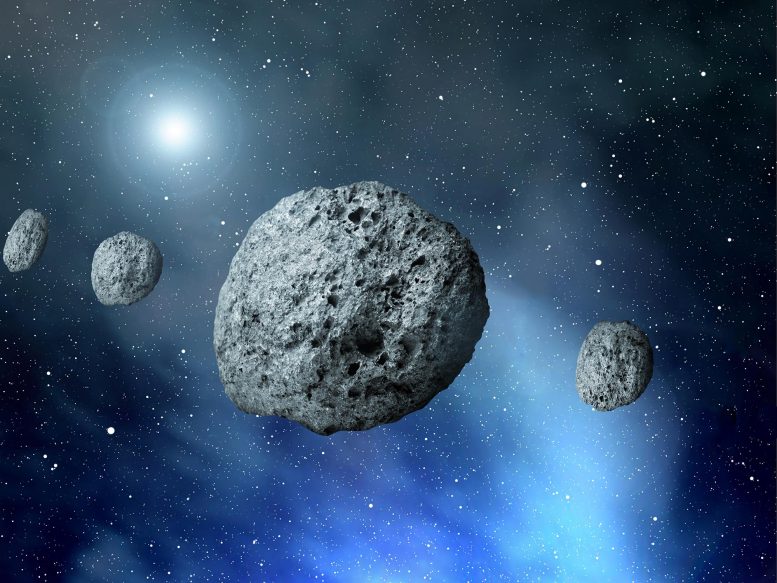
Astronomers found an asteroid system with three satellites.
Planets aren’t the only celestial objects with moons – asteroids can have them too. They are usually other, smaller asteroids in orbit around a larger central one. Now, a team of Thai and French astronomers found an asteroid system with three satellites. The new four-body system makes complex gravitational problems like the three-body problem look simple by comparison.
The asteroid with so many hangers-on is known as (130) Elektra. First found in 1873 by Christian Peters, it measured about 200 km (124 mi) in diameter and weighs approximately 7 x 10^18 kg (15 x 10^18 lb). That’s more than enough mass to capture its three orbiting smaller asteroids, known as S/2003 (130) 1, S/2014 (130) 1, and S/2014 (130) 2 – the most recent discovery was only detailed in a paper published on arXiv on February 10th.
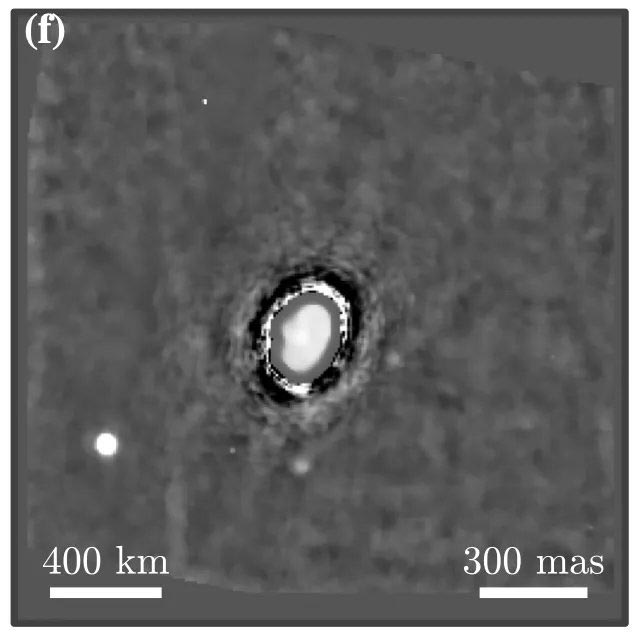
Image of (130) Elektra with the asteroid’s “halo” removed. Credit: Berdeu et al.
Their designations reflect the year they were first observed, which shows that S/2014(130) 2 sat unobserved in a dataset for over seven years. That dataset was collected by the Spectro-Polarimetric High-contrast Exoplanet REsearch facility (SPHERE), an observing platform on the Very Large Telescope (VLT). The telescope turned its attention to (130) Elektra back in 2014. Over that time, the dataset captured S/2014 (130) 2 one hundred and twenty different times over 22 days. So why was it so hard to find?
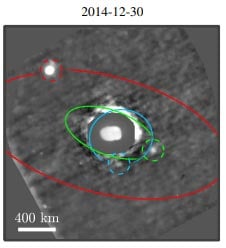
Projected orbits of Elektra’s three moons. Credit: Berdeu et al.
There are two answers to that question. First, the total amount of data has to be reduced. Second, even when the data was reduced, the signal for the moon itself was hidden in the larger asteroid’s “halo.” Dr. Anthony Berdeu and his team developed novel algorithms for both that allowed them to tease out the previously indiscernible moon.
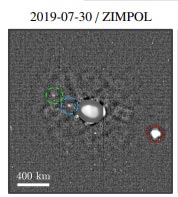
Another potential detection of the moon around Elektra in a different data set – this one was collected in 2019. Credit: Berdeu et al.
Reducing the amount of data while analyzing it might seem counter-intuitive, but data reduction pipelines are commonplace in spectrography. This is mainly because data sets have optical artifacts derived from other spectra that aren’t necessarily of interest to certain studies. To eliminate these artifacts, Dr. Berdeu and his team utilized a novel data reduction technique for the SPHERE instrument called Projection, Interpolation, Convolution (PIC) and published in a separate paper back in 2020. With this tool, they could eliminate enough spectral artifacts to get a clearer picture of their intended target.
That target was still surrounded by a “halo,” which is another type of spectral artifact that made the asteroid’s surface appear to glow. It also reached far enough out from the asteroid’s surface to engulf S/2014(130) 2, which has a semi-major axis of only 344 kilometers (214 miles) from Elektra’s surface.
Moons can happen anywhere as discussed in this UT video.
So the researchers developed another signal processing algorithm, which attempted to model the physics of the halo, and then remove those modeled light levels from any captured image of the target. Using an algorithm known as a point spread function (PSF), the scientists were able to successfully remove the halo effect from the asteroid, revealing Elektra’s smallest and most closely orbiting satellite.
Hearteningly, this data reduction and halo elimination technique can be used on other asteroid observations as well and can be used well after the data was collected, as evidenced by the seven-year time lag in data analysis. So there might be plenty more multi-body asteroid systems in the asteroid belt that make the orbital mechanics of even a four-body problem look like a piece of cake.
Adapted from an article originally published on Universe Today.

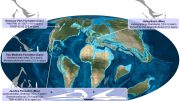






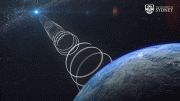
… when one plugs this into Albert’s gravity equation, what would the chosen one find as a result… a headache? …